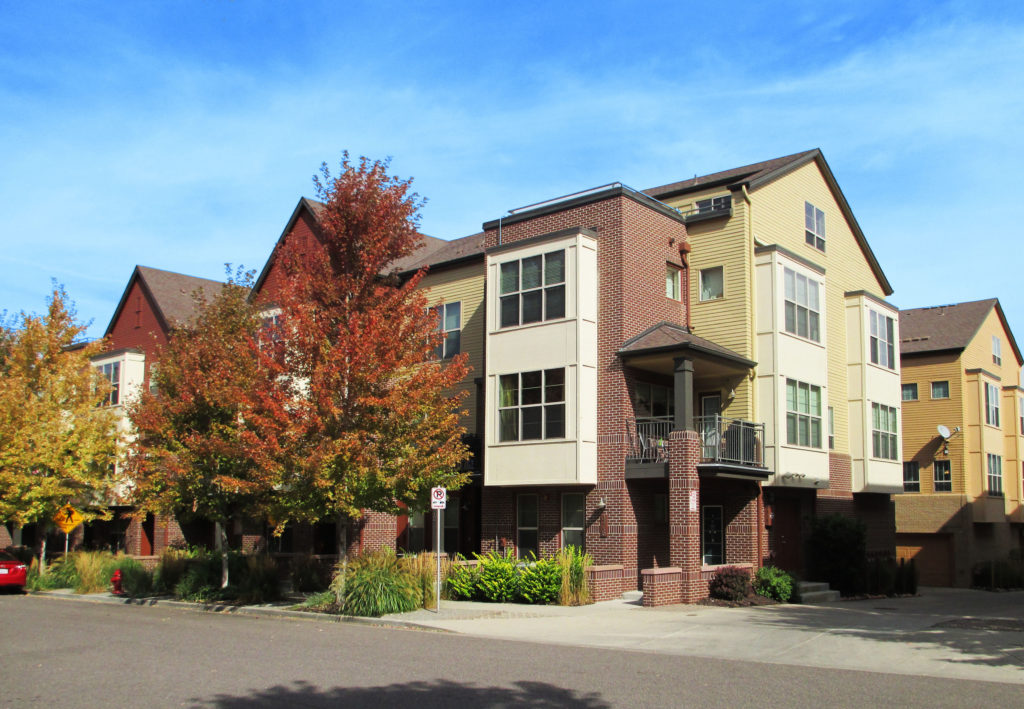The New Year marks the time in society when people examine everyday decisions to improve their quality of life. Suburban regions across America are going through the same process to maintain and attract new residents. Since the 1950’s the trend was to leave the urban core behind and head for the peace and serenity of the suburbs. Now, 60 years later, the demographics of these regions are shifting, following a new mentality and different lifestyle choices.
New Suburbanites Wish List
The look and feel of the suburbs has drastically transformed over the past two decades. Once full of homogeneous families with young children, these communities are becoming increasingly diverse in income, race, and ethnicity. This changing suburban demographic means a modern style of living with an entirely new preference of amenities. In these neighborhoods, suburbanites are looking for a wide range of modern housing typologies varying from apartments and townhomes to condos and compact single-family homes. These smaller lot housing solutions demand ample quality open space for recreational opportunities. In addition, young suburban families desire to be located within a quality educational system where children can continually grow and develop.

Americans are realizing the challenges associated with suburban living. The sprawled, disconnected form has pushed residents away from their favorite destinations and has led to reliance on cars. John Levine author of The Next Slum states, “One in three homeowners prefers to live in a walkable urban setting.” As a result of this, interest in older, first-tier suburban communities is now beginning to resurface.
Re-emergence of First Tier Suburbs
First tier suburbs, located between the central city and the exurbs, were formed in the early decades of the 20th century. Local municipalities now fear neglect and blight with the aging housing in these areas. To adapt, neighborhoods are making an effort to become local destinations. According to the First Suburbs Coalition Idea Book, “In order to continue to attract and retain families and businesses, first-tier suburbs need to find ways to maintain their housing, business structures, utilities, and renew and revitalize these facilities.” With the resurgence of the housing market, many buyers and renters are looking for affordable housing in these regions. To ensure growth of these neighborhoods, existing infrastructure is redeveloping to support connectivity and walkability. Multimodal and public transit options are being added to support a healthy quality of life and economic growth. Retaining top-notch educational systems is also essential to keep existing residents and their tax base, while attracting new residents as well. New zoning updates are supporting density and mixed-use opportunities. Tax increment financing (TIF) districts and private development partnerships are being used to regenerate neglected areas of the community. First-tier suburbs need to continually adapt to the changing demographics through innovative new urbanism strategies.

Look of the New Downtown Suburbia
One of the newest trends taking place in the suburbs is the walkable centralized urban downtown. Suburban communities have been retrofitting failing shopping centers and auto-oriented retail properties into compact mixed-use developments with vibrant main streets. Employment centers mixed with residential and commercial options create neighborhoods where residents can live, work, and play.
Belmar in Lakewood, Colorado exemplifies a dying suburban mall that was transformed into a vibrant mixed-use community. The Villa Italia Mall, built in Lakewood in 1966, began to significantly decline in the early 90’s. The city saw the need to revitalize the area, and the vision for Belmar centered on four primary goals:
- Build a downtown with a real sense of community.
- Reconnect the site to the surrounding area.
- Celebrate the public rather than the private realm.
- Create a diverse environment promoting the pedestrian public transit rather than the personal automobile.
Belmar is organized around a central main street lined with a variety of shops and restaurants. A central open space is the epicenter for cultural, artistic, and educational events. The street grid reconnects with the existing adjacent neighborhoods and amenities to maximize connectivity and walkability. Commercial and green spaces are activated through an array of housing typologies. Belmar’s thoughtful design by Van Meter Williams Pollack has created a highly desired new suburban downtown core for the city of Lakewood.
A new demographic shift has driven the push for reimagining the suburbs. Communities need to create walkable suburban downtowns, strategic infill development, and improve existing infrastructure in order to retain and attract new residents. Providing residents with a variety of transit, recreation, employment, services and educational opportunities creates highly desirable neighborhoods and favorite places. With the majority of housing located in the suburbs, it is continually crucial to rethink the suburban lifestyle and reimage how we live.
The original article, written by Chris Grady and Jeff Neuilieb, can be found in the Winter 2016 issue of Best in American Living.

